15 Essentials For A Light Carry-On (+ 3 You Should Never Forget)

Packing light isn’t just about saving space—it’s a total game changer for how you travel. Forget the hassle of dragging oversized suitcases through crowded terminals or stressing over baggage fees.
After years of hopping from place to place, I’ve finally mastered the art of carry-on only—and trust me, it’s liberating. You really don’t need half the things you think you do. The secret? A smartly packed bag filled with the right essentials.
In this guide, I’m sharing my go-to carry-on checklist—items that have saved me more than once on the road. Plus, I’ll reveal the three non-negotiables I always bring along, no matter the destination. Ready to travel lighter, smarter, and stress-free?
1. Lightweight clothing layers
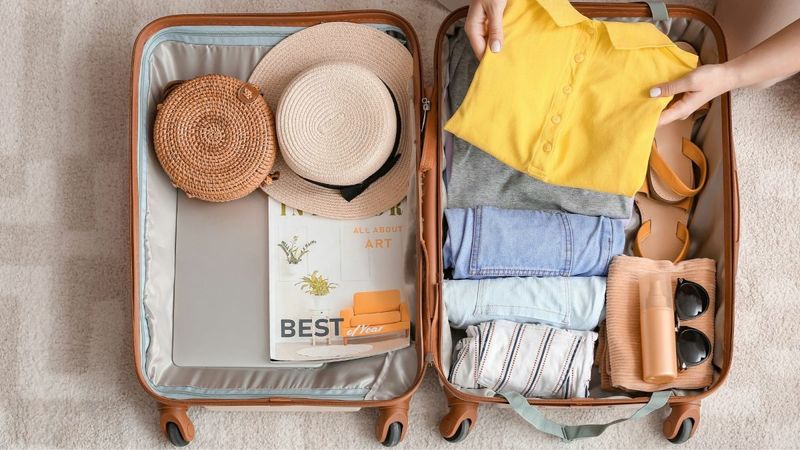
Smart travelers know the secret to packing light is bringing clothes that work together. I always pack neutral colors that mix and match easily, focusing on lightweight fabrics that don’t wrinkle.
Think tank tops, a couple of t-shirts, one long-sleeve shirt, and maybe a light sweater. The key is layering – you can add or remove pieces as temperatures change throughout your trip.
Rolling your clothes instead of folding saves tons of space and reduces wrinkles. Limit yourself to 3-4 outfits max, even for longer trips. You can always wash items in your hotel sink!
2. Travel-size toiletries

Gone are the days of lugging full-size shampoo bottles! Travel-size toiletries save precious space in your carry-on while keeping you fresh on the road.
Most drugstores sell mini versions of popular brands, or you can buy reusable silicone bottles to fill with your favorite products. Remember the TSA 3-1-1 rule: liquids must be in 3.4 oz containers or smaller, all fitting in one quart-sized clear bag.
My strategy? Bring only what you absolutely need – shampoo, conditioner, face wash, moisturizer, deodorant, and toothpaste. Many hotels provide soap and lotion anyway!
3. Packable rain jacket

Weather can change without warning, ruining your carefully planned adventures. A packable rain jacket takes up minimal space but delivers maximum protection when unexpected showers hit.
Look for ultralight jackets that compress into their own pocket, becoming smaller than a sandwich. The best options are breathable yet waterproof, with taped seams and adjustable hoods.
I’ve been caught in sudden downpours from Seattle to Singapore, and this single item has saved countless days of sightseeing. Even in sunny destinations, it can double as a windbreaker or extra layer on chilly evenings.
4. Compression socks
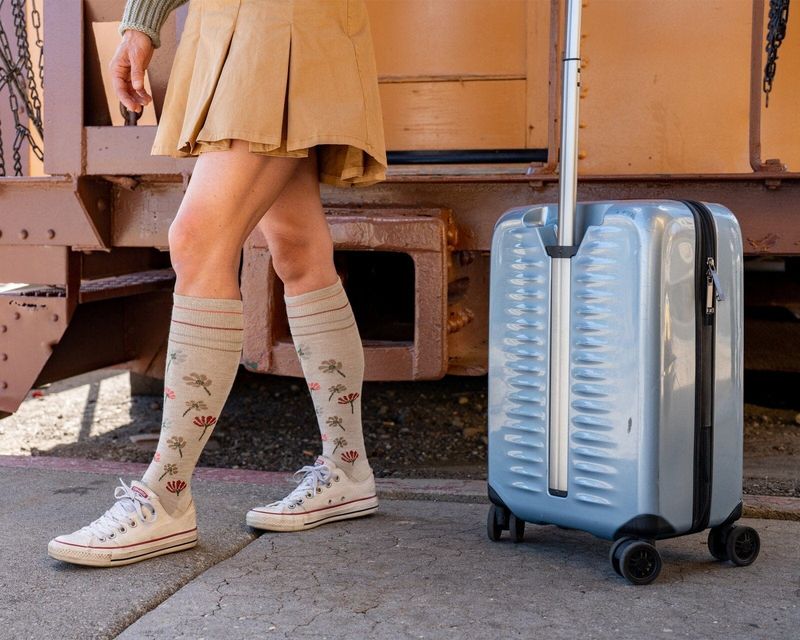
Long flights can take a toll on your circulation, especially when you’re squeezed into those tiny airplane seats. Compression socks gently squeeze your legs, promoting blood flow and reducing swelling during extended periods of sitting.
They might not be the sexiest accessory, but they make a huge difference in how you feel after traveling. I noticed way less ankle swelling and fatigue after discovering these miracle workers.
Modern options come in fun patterns and colors – nobody will know they’re compression socks! Choose pairs with graduated compression (tighter at the ankle, looser at the calf) for maximum comfort.
5. Reusable water bottle
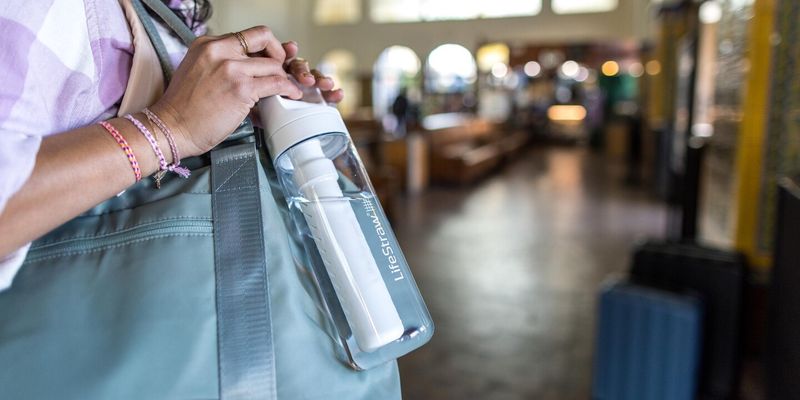
Staying hydrated while traveling is crucial, but buying bottled water gets expensive and creates unnecessary plastic waste. A reusable water bottle solves both problems beautifully.
Empty it before security, then refill at water fountains once you’re through. Many airports now have special bottle-filling stations that provide filtered water.
If you’re traveling somewhere with questionable tap water, consider a bottle with a built-in filter or purifier. My collapsible silicone bottle barely takes up any space when empty – perfect for light packers who still want to stay hydrated without paying airport prices!
6. Travel pillow (compact)
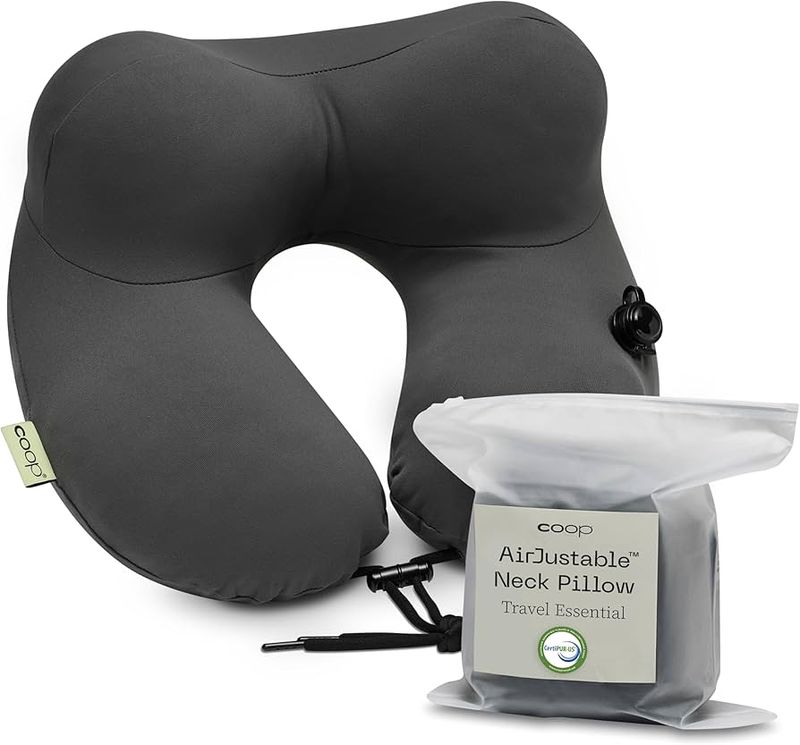
Catching some quality sleep on planes, trains, or buses can transform your travel experience. A good compact travel pillow supports your neck properly while taking minimal space in your carry-on.
Inflatable pillows are my go-to choice – they pack down to the size of a smartphone when deflated. Memory foam options provide better support but take more space.
Some newer designs attach directly to your seat belt or headrest instead of wrapping around your neck. Whatever style you choose, make sure it has a washable cover – public transportation isn’t exactly known for cleanliness!
7. Snacks
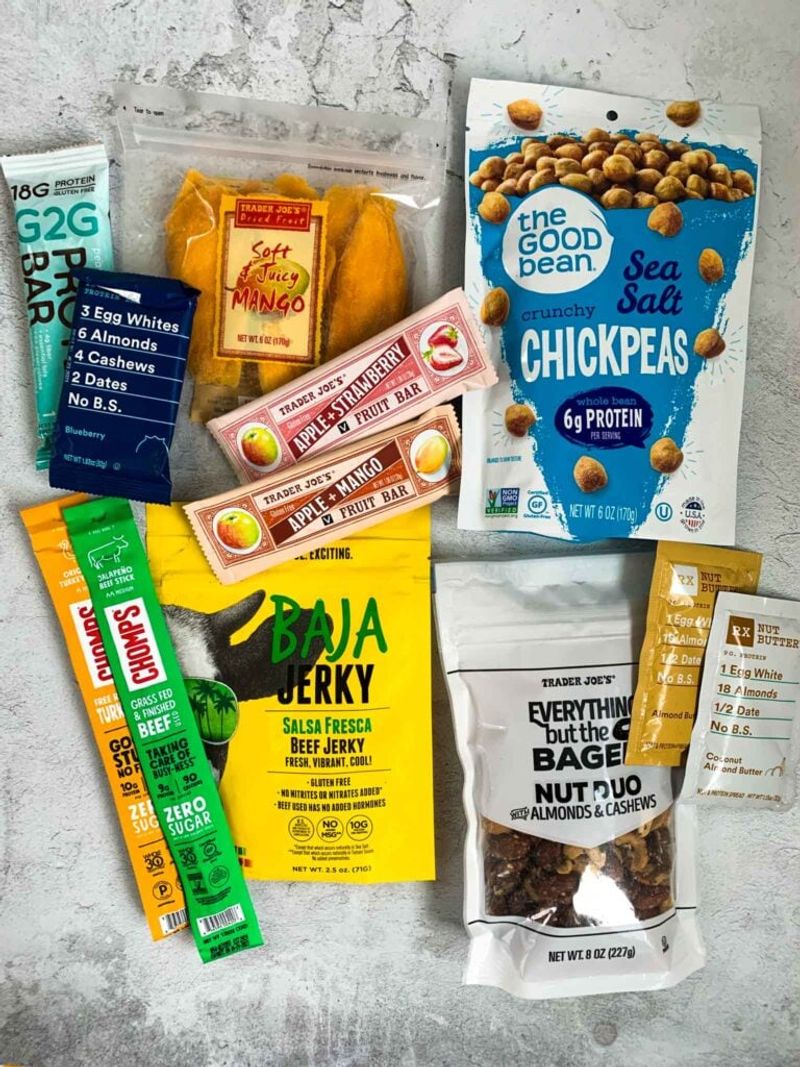
Airport food is notoriously overpriced and often unhealthy. Packing your own snacks saves money and keeps your energy up during long travel days.
Focus on items that won’t get crushed, melt, or spoil easily. Granola bars, nuts, dried fruit, and crackers are all solid choices. Individual packets of nut butter or tuna can add protein without refrigeration.
Having snacks handy is especially important during delays or when you arrive at your destination after local restaurants have closed. Just remember to eat or dispose of fresh fruits and vegetables before crossing international borders – many countries prohibit bringing in produce.
8. Phone charger
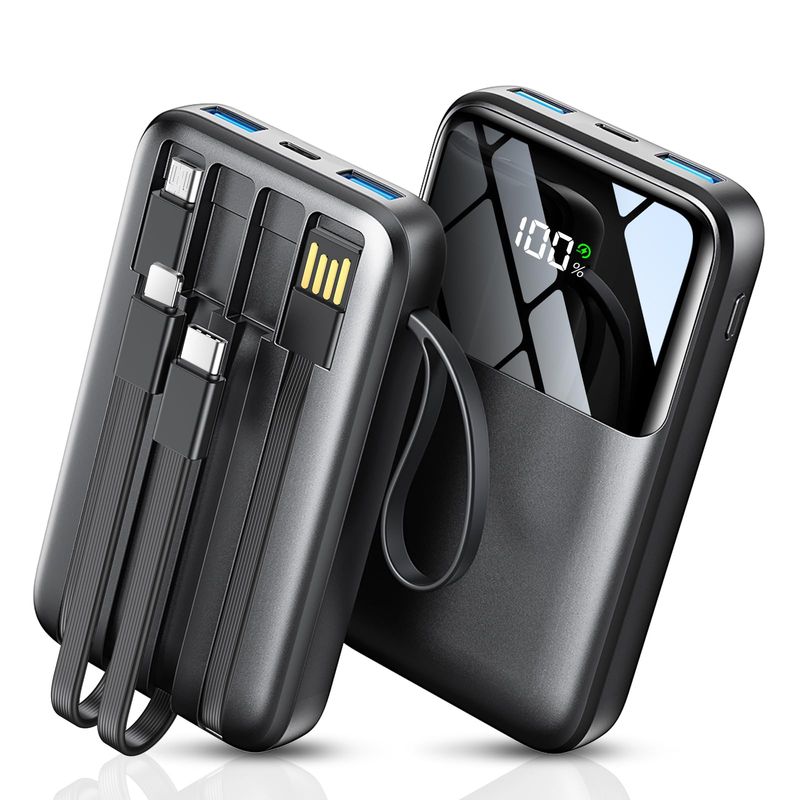
Our phones have become essential travel tools – they’re our maps, boarding passes, translators, cameras, and emergency contacts all in one. A dead battery can quickly turn into a travel nightmare.
Always pack your regular charging cable plus a portable power bank for on-the-go charging. I recommend a power bank with at least 10,000mAh capacity, which provides multiple full charges for most smartphones.
Consider a multi-port wall charger that can juice up several devices simultaneously to save outlet space in hotels. Some newer options include built-in international adapters, eliminating the need for a separate converter.
9. E-reader or book

Travel inevitably involves waiting – at gates, on planes, in hotel lobbies. Having reading material turns these dull moments into enjoyable downtime.
E-readers like Kindle or Kobo are perfect for travelers, holding thousands of books while weighing less than a paperback. Their battery life lasts weeks, and many models are waterproof for poolside or beach reading.
If you prefer physical books, bring just one paperback to save weight. Another space-saving option is downloading the Kindle app to your phone or tablet if you don’t want to carry a separate device. Reading local authors or books set in your destination adds another dimension to your travel experience!
10. Sunglasses

Whether you’re heading to a tropical beach or a snowy mountain, sunglasses are non-negotiable for protecting your eyes from harmful UV rays. Squinting through bright days can trigger headaches and ruin your vacation photos.
Polarized lenses reduce glare and provide clearer vision, especially near water or snow. Bring a hard case to prevent crushing in your packed bag – nothing’s worse than discovering broken sunglasses on day one of your trip.
If you wear prescription glasses, consider photochromic lenses that darken in sunlight or clip-on sun shields. This two-in-one approach saves valuable space in your limited carry-on.
11. Travel-size laundry detergent

Washing clothes on the go is the ultimate packing hack. With just a few clothing items and some travel detergent, you can extend your wardrobe indefinitely.
Laundry sheets are my newest discovery – they’re paper-thin, TSA-friendly, and dissolve completely in water. Traditional liquid detergent also comes in travel sizes, or you can fill a small container from your home supply.
Simply wash items in your hotel sink, wring them out in a towel, and hang to dry overnight. Quick-dry fabrics like nylon, polyester, and merino wool work best for this approach. This strategy lets you pack for a week but travel for a month!
12. Flip-flops or slides

Multipurpose footwear is essential for light packers. Flip-flops or slides take almost no space but serve several important functions during your travels.
They’re perfect for questionable hotel showers, pool decks, and beach days. After long days of walking in regular shoes, your feet will thank you for the chance to breathe in open footwear.
Look for foldable options with some cushioning and arch support – totally flat dollar-store flip-flops can hurt your feet if worn too long. Some newer travel slides even roll up to take less space. Just make sure they’re fully dry before packing to prevent mildew!
13. Ziplock bags
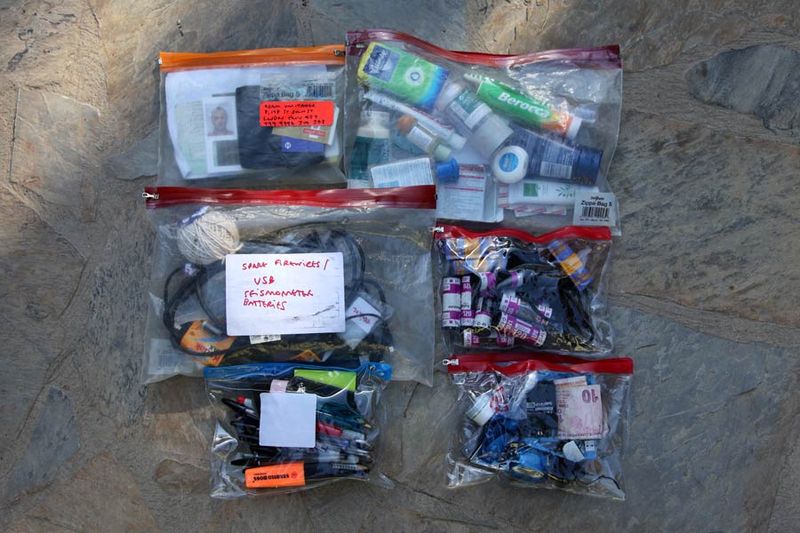
Few travel items offer more versatility than humble ziplock bags. These transparent pouches separate wet items from dry ones, organize small accessories, and contain potential leaks from toiletries.
I always pack several sizes – gallon bags for dirty laundry or wet swimsuits, sandwich-sized for organizing chargers and cords, and snack-sized for medications or jewelry. They weigh practically nothing yet solve countless travel problems.
When hiking or at the beach, they protect your phone from sand and water. They can even serve as makeshift ice packs when filled with ice from the hotel machine. The best part? They’re reusable throughout your trip!
14. Power adapter

Different countries use different electrical outlets – a fact many travelers discover only after arriving unable to charge their devices. A universal power adapter ensures you can plug in anywhere.
Modern adapters cover all major international socket types in one compact device. Some even include USB ports so you can charge multiple devices while using just one outlet.
Remember that adapters only change the plug shape, not the voltage. Most modern electronics (phones, laptops, cameras) automatically adjust to different voltages, but check your devices before traveling. Hair dryers and straighteners often need separate voltage converters unless specifically labeled as dual-voltage.
15. Eye mask and earplugs
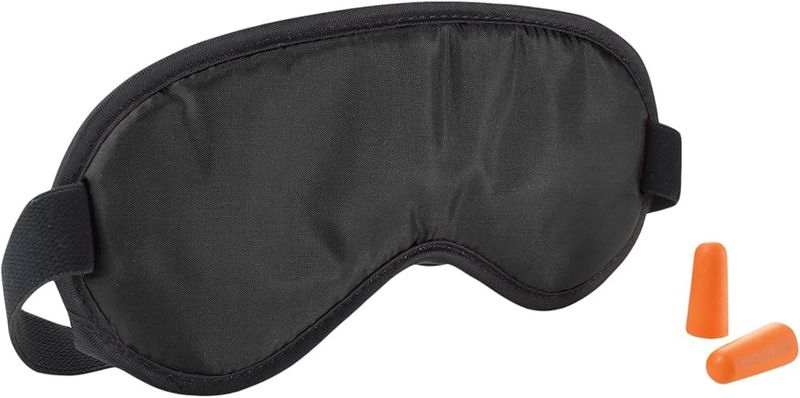
Quality sleep can make or break your travel experience, yet hotels and planes often have light leaks and noise issues. An eye mask and earplugs create your personal sleep sanctuary anywhere.
Contoured eye masks that don’t press against your eyelids are worth the extra few dollars. For earplugs, soft silicone or foam options block noise without causing discomfort during long wear.
These tiny items take almost no space but dramatically improve sleep quality. Some travelers prefer white noise apps instead of earplugs, but having both options gives you flexibility. When you’re well-rested, you’ll enjoy your destination so much more!
16. Passport (never forget)
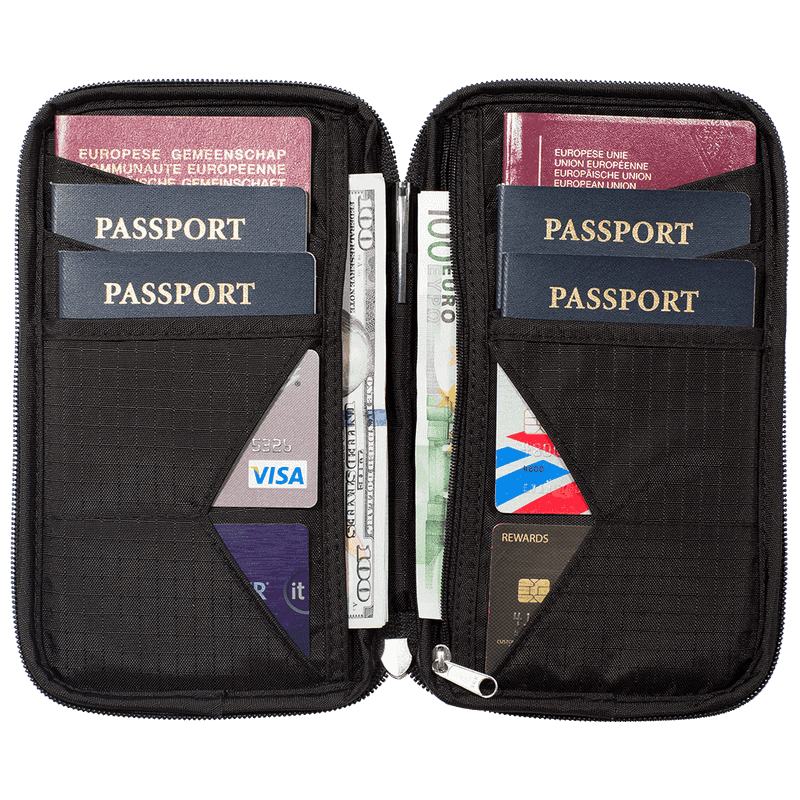
Your passport is literally your ticket to the world – without it, international travel becomes impossible. This small booklet proves your identity and citizenship at border crossings worldwide.
Always store your passport in a consistent, secure location while traveling. Many experienced travelers wear hidden pouches under clothing or use hotel safes rather than carrying passports during daily activities.
Make digital and physical copies of your passport’s photo page to keep separate from the original. This makes replacement much easier if yours is lost or stolen. Check expiration dates well before traveling – many countries require passports valid for at least six months beyond your trip dates!
17. Medications (never forget)
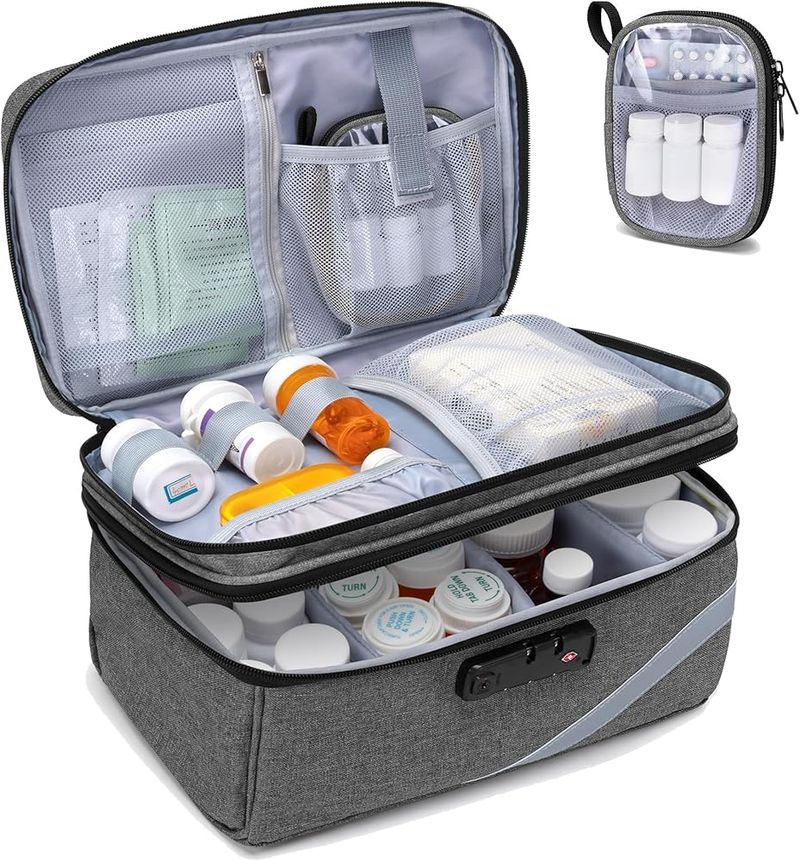
Access to familiar medications can be challenging abroad, where even common drugs may require prescriptions or have different names. Always pack enough for your entire trip plus a few extra days in case of delays.
Keep medications in original labeled containers, especially when crossing borders. Bring a doctor’s note for prescription items, particularly controlled substances like sleep aids or pain medications.
Don’t forget basics like pain relievers, anti-diarrheal tablets, motion sickness remedies, and any personal prescriptions. A small pill organizer helps manage daily doses without carrying all bottles, but keep original packaging accessible for security or customs questions.
18. Wallet with cards/cash (never forget)
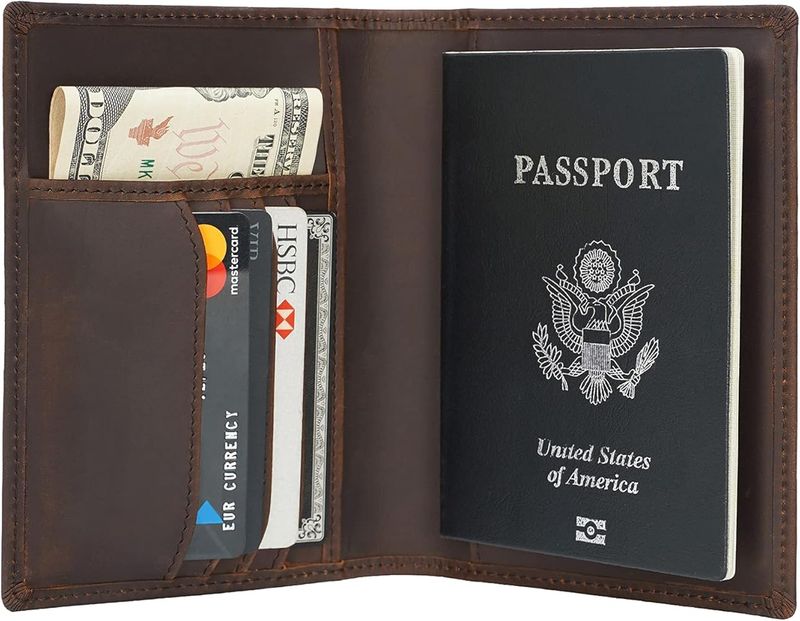
Money access is fundamental to successful travel, yet payment methods vary dramatically worldwide. A well-prepared wallet contains multiple options for different situations.
Bring at least two different credit cards (preferably with no foreign transaction fees), plus some local currency obtained before arrival. Inform your banks about travel dates to prevent fraud alerts freezing your accounts.
Keep cards and cash distributed in different locations – some in your wallet, some in a hidden pouch, some in your luggage. This precaution ensures you’re not stranded without funds if theft occurs. Many travelers also carry a small emergency stash of US dollars, which are widely accepted in crisis situations.
